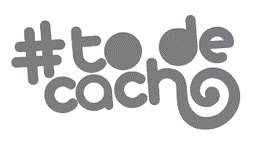Addressing forfeiture of issues on appeal and sufficiency of the asserted prior art, the US Court of Appeals for the Federal Circuit upheld a Patent Trial & Appeal Board obviousness finding, explaining that a party does not waive arguments on appeal by failing to include them in a request for rehearing. Voice Tech Corp. v. Unified Patents, LLC, Case No. 22-2163 (Fed. Cir. Aug. 1, 2024) (Lourie, Chen, Cunningham, JJ.)
Unified Patents petitioned for inter partes review (IPR) of a Voice Tech patent that purported to improve upon the prior art by allowing a single mobile device to access and control various native applications and functions on a computer. Unified alleged that the challenged claims were unpatentable as obvious over three prior art references. The Board agreed and found that all of the challenged claims were unpatentable. Voice Tech appealed.
Voice Tech argued that Unified’s petition failed to identify any disclosure in the prior art that taught the “mobile device interface” claim limitation in the challenged claims because Unified’s claim analysis failed to expressly mention a “mobile device interface.” The Board dismissed this argument, finding that Unified properly mapped its analysis of other patent claims to the “mobile device interface” claim recitation and presented a sufficient argument regarding obviousness. The Federal Circuit agreed that one of the prior art references taught a “mobile device interface.” The Court found that the Board did not rely on a new theory not found in the IPR petition, but instead had mapped the “mobile device interface” limitations to the prior art because the petition itself raised the theory.
Voice Tech also argued that the Board had failed to properly interpret certain claim terms. Unified countered that Voice Tech forfeited the claim construction arguments because they were not included in Voice Tech’s request for rehearing to the Board. The Federal Circuit disagreed, finding that a party’s choice to not re-raise an argument in a request for rehearing will not, by itself, forfeit the argument for review on appeal. The Court found that since Voice Tech had raised the claim construction arguments to the Board in its patent owner’s response, it had not forfeited those arguments on appeal.
The Federal Circuit also addressed Unified’s argument that Voice Tech’s proposed claim constructions would not change the outcome of the patentability analysis given the Board’s findings that the prior art disclosed the claim terms. The Court agreed with Unified, finding that it only needed to construe claim terms as necessary to resolve the controversy. The Court found that because Voice Tech’s responsive arguments were conclusory and failed to address how Voice Tech would be prejudiced by the Board’s adopted claim construction, the Federal Circuit did not need to consider Voice Tech’s claim construction arguments.
Finally, the Federal Circuit addressed Voice Tech’s arguments that the Board erred in finding that the prior art taught certain claim limitations and that Unified’s obviousness analysis was based on hindsight bias. The Court upheld the Board’s obviousness determinations as to all challenged claims, [...]
Continue Reading
read more

 Subscribe
Subscribe



